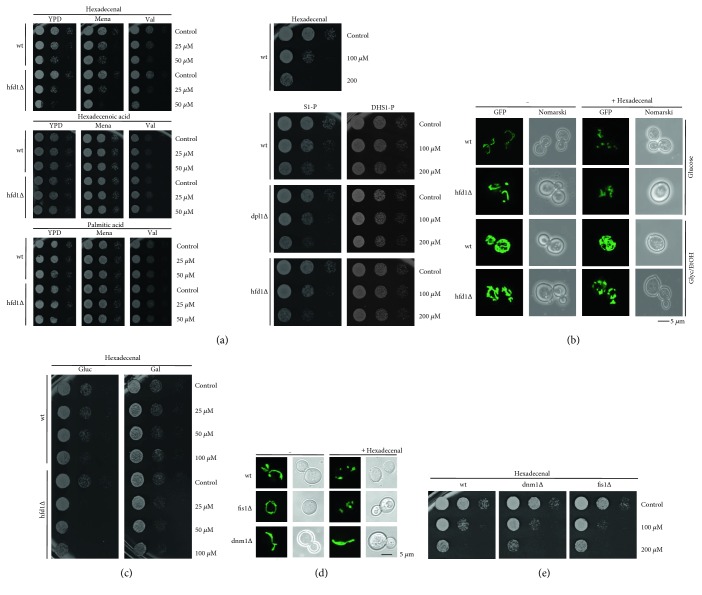Figure 3.
Hexadecenal is the most biologically active intermediate of the sphingolipid degradation pathway. (a) Hexadecenal and the downstream metabolites hexadecenoic and palmitic acid were tested for growth inhibition of the indicated yeast strains (left panel). The indicated doses were applied for 2 h, and colony formation was subsequently assessed on YPD plates containing or not 50 μM menadione or 4 μM valinomycin. The upstream metabolites sphingosine-1-phosphate (S1-P) and dihydrosphingosine-1-phosphate were tested for growth inhibition of the indicated yeast strains in the right panel. (b) External hexadecenal addition causes mitochondrial fragmentation dependent on Hfd1p function. Mitochondria were visualized by expression of mt-GFP in yeast wild type and the hfd1Δ mutant in synthetic glucose or glycerol/ethanol medium before and after the exposure (1 h) to 50 μM hexadecenal. (c) Galactose growth counteracts hexadecenal growth inhibition. Hexadecenal was applied for 1 h to the indicated yeast strains grown on glucose- or galactose-containing synthetic medium. Colony formation was then assessed on YPD agar plates. (d) Hexadecenal induces mitochondrial fragmentation through Dnm1p. The indicated yeast strains expressing mt-GFP were treated or not with 50 μM hexadecenal for 1 h before visualization of mitochondria. (e) Suppression of mitochondrial fission does not counteract hexadecenal-mediated growth inhibition. The indicated yeast strains were assayed for hexadecenal inhibition as in (a).

